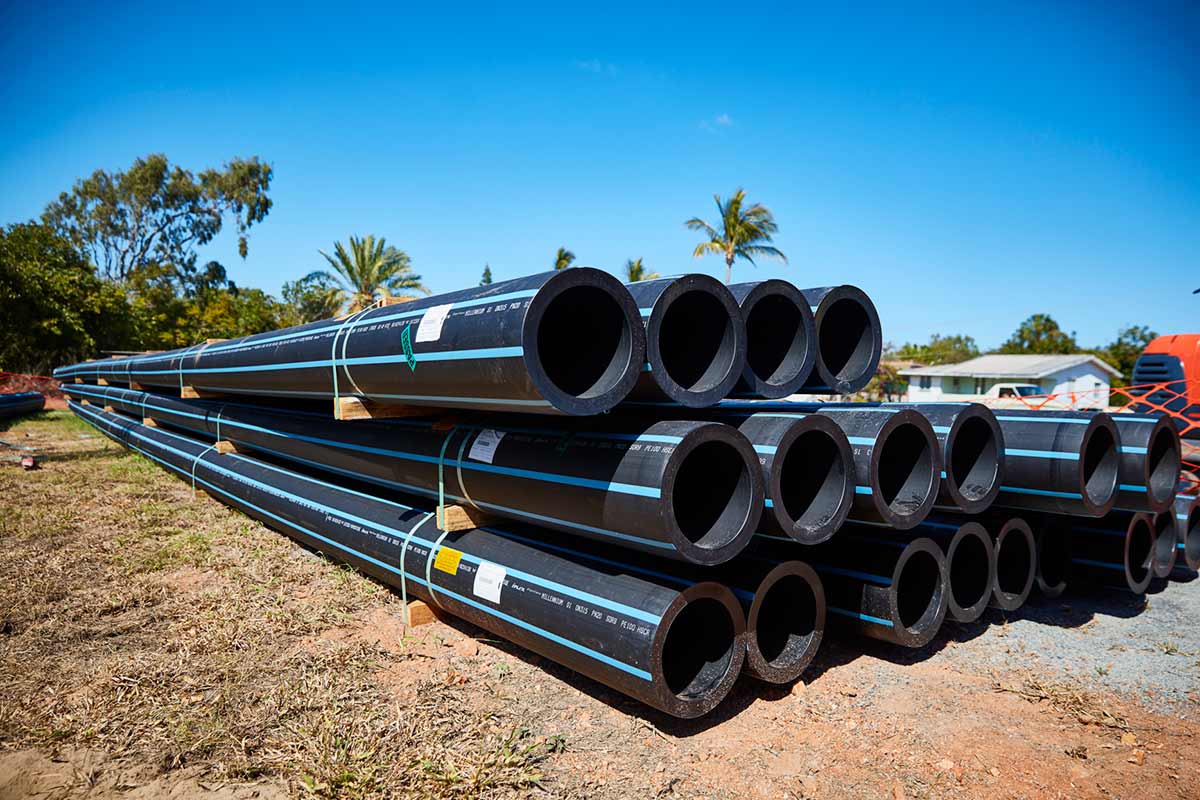PE112 vs PE100

This is the final piece in a series of blog posts which provide an overview of the new developments within the PE100 class of compounds. If you haven’t already, read over the Introduction to Next Generation PE Pip Grade Resin, Innovation within the PE100 class and High Stress Crack Resistant (HSCR), Raised Temperatures and Resistant to Disinfectants.
PE112 is a polypipe material which claims to be the next generation after PE100, due to its higher MRS (minimum required strength). Yet despite this, the maximum allowable operating pressure (MAOP) of Australian standard AS/NZS 4130 compliant pipes made from this material cannot be increased nor can the wall thickness be reduced. This blog post explores this in more detail.
PE112 Classification
Classification of plastic pipe materials (PE, PVC, PA, etc) used for pressure applications is governed by ISO 12162. The standard also includes nomenclature for materials with an MRS of 1 to 50 MPa.
The MRS classification is based on the lower confidence limit (σLPL) of hoop strength at 20°C for 50 years, which is derived from the extrapolation based on ISO 9080. A polyethylene material with an σLPL value between 8 and 10 MPa is classified as PE80; while PE100 has an σLPL between 10 and 11.2 MPa. The σLPL at 20°C for 50 years MPa of most commercially available PE100 grade resins is well above 10 MPa, thus offering an additional safety margin. The σLPL at 20°C for 50 years MRS of some recently developed pipe resins is 11.3 MPa, which falls into the next defined class of 11.2 to 12.5 MPa. According to ISO 12162, these materials are designated as PE112.
Despite the higher MRS rating of PE112, the material does not allow increasing the MAOP or downgauging of the wall thickness for standard compliant pressure pipes as there is no provision for PE112 resins in the relevant product and installation standards. For example, some polyethylene grades may have an MRS rating of 10 MPa but this does not automatically mean that the product can be classified as PE100. To be nominated as a PE100 grade resin, the product must meet all the specifications for all the different properties, as detailed in product standards such as ISO 4427/4437 and AS/NZS 4131/4130. ISO 12162 is also clear on this point and states in its introduction: “The classification in this International Standard does not qualify a material for a specific application. For specific applications, the relevant product standards require that additional mechanical and physical properties be met.” For example, for pressurised transport of fluids, higher resistance to SCG and RCP may be required to take advantage of the higher MRS rating of PE112.
The gain in strength of PE112 is insufficient to permit a shift in SDR. As an example, a PN16 rated PE100 pipe for water requires an SDR of 11. The next pipe size up, with a lower wall thickness, is SDR 13.6, but this would give for PE112 a PN14.2 rated pipe. Part of the rapid success of PE80 and PE100 when introduced to the market was the fact that the polyethylene plastic pipe still conformed to standardised dimensions as defined by SDR. Grouping pipes by SDR is more efficient in terms of manufacturing costs and system assembly compatibility e.g. using jointing systems such as electrofusion components which are also defined by SDR. A minimal investment in new tooling was required by pipe manufacturers switching to PE80 or PE100 resins; welding compatibility was also maintained. Unfortunately, this is not the case for PE112 if alternative pipe sizes must be employed to take advantage of its higher strength.
The next logical step in MRS is PE125, which would enable a PN16 rated pipe to be manufactured using SDR 13.6. This rationale was discussed by the ISO technical committee (TC) TC138/SC4 in 2000. The committee agreed that the next product standard classification for a PE pressure pipe grade will be PE125, and that no further standardisation work would be done on PE112.
This blog series has explored the various advantages of PE100 and its variants and how their uses can differ depending on the application that the polypipes will be used in, and how although PE112 seems like a step up, it may provide little added value.
Make sure to get in touch for more information on PE100 and the polypipes that Alkadyne produces with Qenos.




